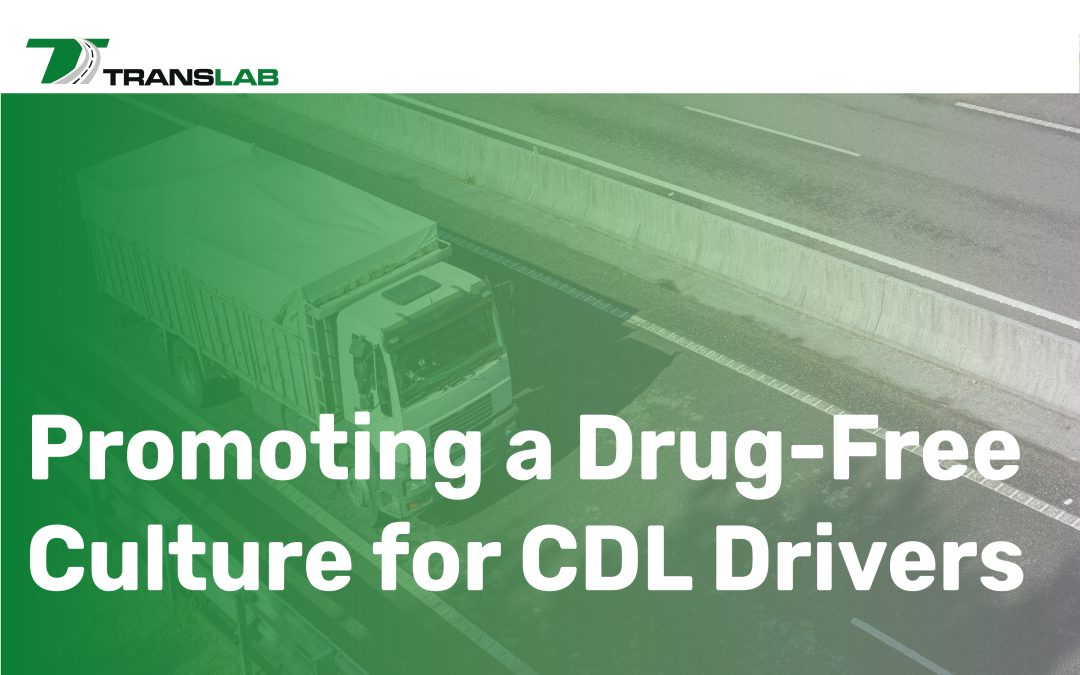Ensuring a drug-free workplace is not only a legal requirement but also a critical component of maintaining safety and productivity. For employers of Commercial Driver’s License (CDL) holders, creating and sustaining a drug-free workplace can be challenging yet highly rewarding. The transportation industry demands the highest standards of safety and reliability, making it imperative for employers to address substance abuse issues proactively. Implementing robust policies and procedures is essential to safeguarding the well-being of employees, passengers, and the general public.
Clear and Consistent Policies Regular Training and Education
Establishing clear, comprehensive policies is the foundation of a drug-free workplace. These policies should:
Define prohibited substances and behaviors.
Outline the consequences of policy violations.
Detail the processes for testing, reporting, and addressing drug use.
Ensure all employees understand these policies by including them in orientation programs and providing regular reminders.
Regular Training and Education
Ongoing education is crucial in fostering a drug-free culture. Conduct regular training sessions that:
Educate employees on the dangers of drug use and its impact on safety and health.
Inform about the company’s drug testing procedures and policies.
Promote awareness of substance abuse signs and symptoms.
Use different formats such as workshops, online courses, and printed materials to keep the information engaging and accessible.
Robust Drug Testing Program
Implementing a comprehensive drug testing program is essential. This should include:
Pre-employment Testing: Ensuring new hires are drug-free before they start working.
Random Testing: Deter drug use through the unpredictability of random tests.
Post-Accident Testing: Test immediately after any accident to determine if drug use was a factor.
Reasonable Suspicion Testing: Test based on observed behavior or other evidence of drug use.
Return-to-Duty and Follow-Up Testing: For employees who have completed a drug rehabilitation program.
Use certified labs and ensure testing procedures are transparent and fair.
Supportive Work Environment
Create a supportive environment where employees feel comfortable seeking help. This includes:
Providing access to Employee Assistance Programs (EAPs) that offer counseling and support for substance abuse issues.
Encouraging an open-door policy where employees can discuss their concerns without fear of retribution.
Offering wellness programs that promote healthy lifestyles and stress management techniques.
A supportive workplace can significantly reduce the stigma around seeking help and encourage proactive management of potential substance abuse problems.
Leadership by Example
Leadership plays a crucial role in promoting a drug-free culture. Leaders should:
Adhere to the same drug policies as their employees.
Demonstrate commitment to a drug-free workplace through their actions and decisions.
Actively participate in and support all drug-free workplace initiatives and programs.
When leaders model the behavior they expect from their employees, it reinforces the importance of maintaining a drug-free environment.
Consistent Communication
Regular, open communication reinforces the importance of a drug-free workplace. This can be achieved by:
Regularly updating staff on policy changes and the results of drug-free initiatives.
Sharing success stories and recognizing employees who contribute to maintaining a drug-free workplace.
Using multiple communication channels such as emails, newsletters, and meetings to keep the message consistent and pervasive.
Clear, consistent communication helps maintain awareness and commitment across the organization.
Promoting a drug-free workplace among CDL drivers is vital for safety, compliance, and overall organizational well-being. Employers can foster a culture prioritizing health, safety, and productivity by implementing clear policies, providing ongoing education, maintaining a robust testing program, creating a supportive environment, demonstrating leadership commitment, ensuring consistent communication, and partnering with external organizations.
A drug-free workplace not only protects your employees but also enhances the reputation and success of your business.


